The Samsung Galaxy Tab S2 Review
by Brandon Chester on October 15, 2015 8:00 AM ESTSystem Performance: GPU
While CPU performance characterizes one part of an SoC, GPU performance characterizes another. Tablets have long been a form factor where GPU performance can be pushed much further than in a phone due to the larger chassis of a tablet having far fewer size and thermal limitations. While some tablets elect to use specialized SoCs with more powerful GPU hardware than smartphones, the Tab S2 uses the same ARM Mali T760 GPU used in the Galaxy Note 4 Exynos.
To characterize the Tab S2's GPU performance I've run it through our standard GPU benchmarks. First up is 3DMark which actually has both a CPU and GPU component, followed by BaseMark X and GFXBench which focus more strongly on the GPU alone.
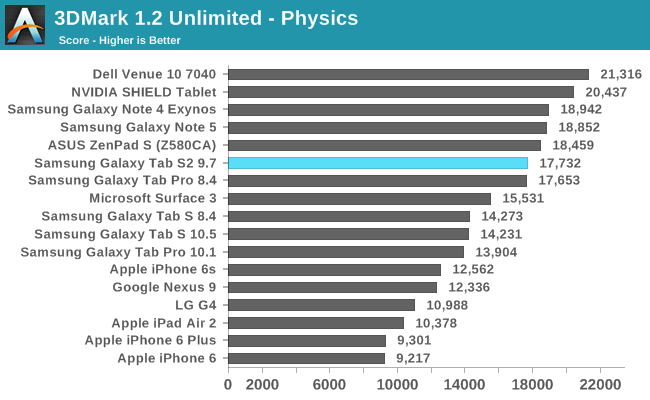


In 3DMark all of the Tab S2's scores are roughly equivalent to the Galaxy Note 4 Exynos which is not unexpected. Unfortunately, it's clear that Mali T760 can't keep up with NVIDIA's mobile Kepler implementation or Apple's custom 8 core PowerVR 6XT part. While the Nexus 9 and iPad Air 2 both fall short in the physics sub test their scores in the graphics sub test are in a completely different league than the Tab S2.
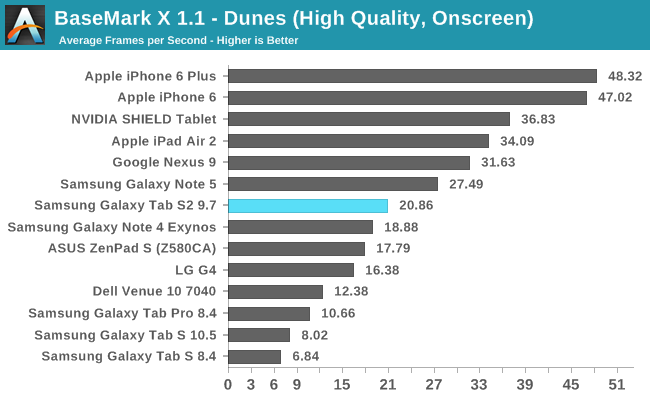
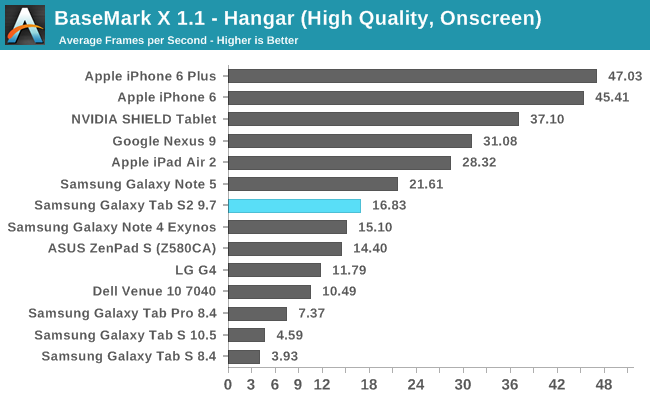
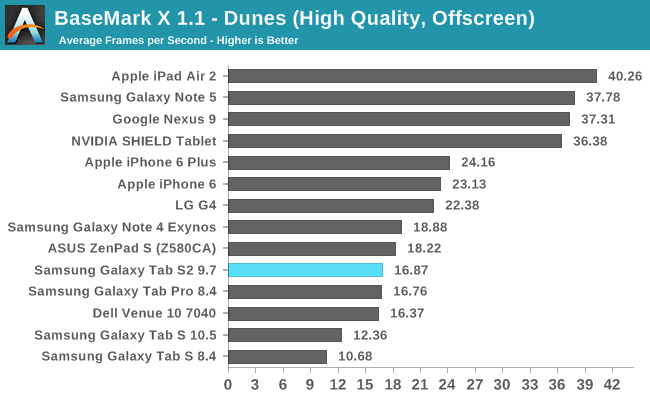
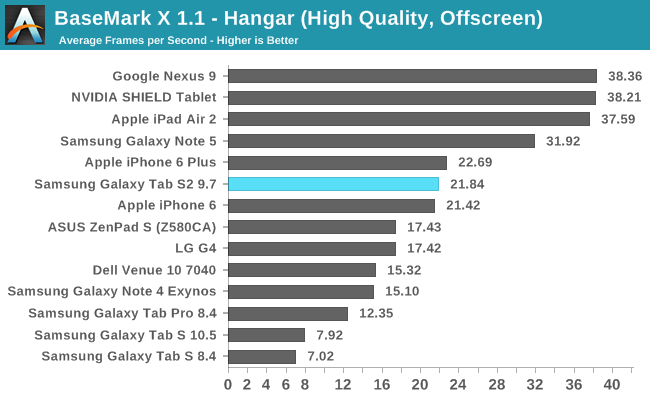
In BaseMark X we again see the Tab S2 sitting fairly far behind the iPad Air 2 and Nexus 9. If I was considering the Tab S2 8.0 which retails for $399 these results would be perfectly fine, as the major competition at that price point is the iPad Mini 4 which has Apple A8 SoC. At $499 the GPU performance simply isn't competitive, and it outlines the issues with trying to make one SoC fit many different devices.
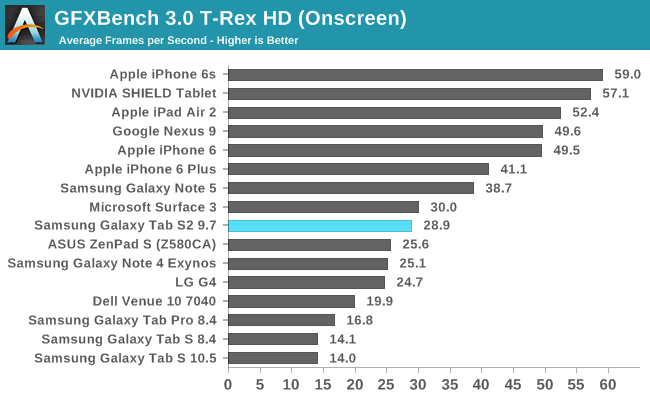
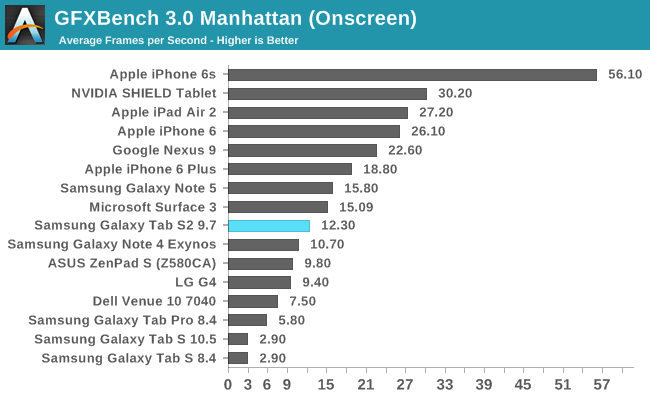
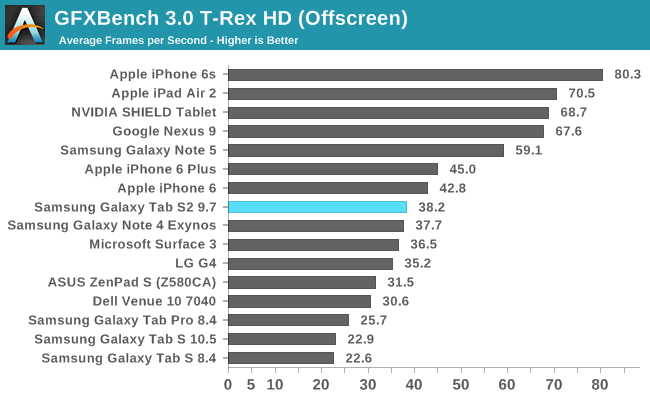
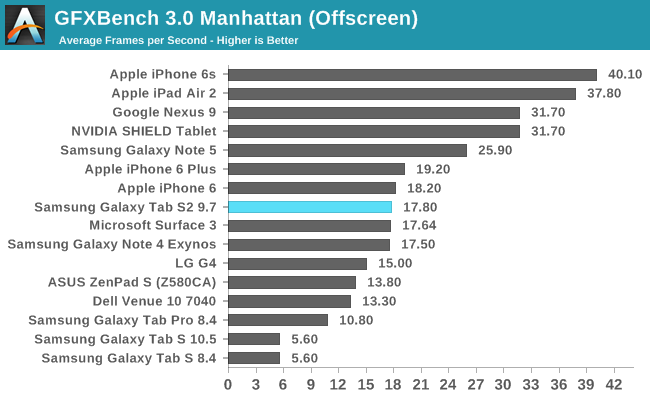
In GFXBench the Tab S2 is in the same situation as the previous tests. GPU performance is right around where the Galaxy Note 4 and iPhone 6 are, and it's just not good enough to justify the $499 price tag of the Tab S2.
Like I said on the last page, the fact that most Android tablet OEMs aren't providing CPU and GPU performance that is anywhere near competitive with the iPad Air 2 is a very bad thing for the entire tablet industry. Apple decided to not even update the iPad Air 2 despite it being a year old, and it's hard to blame them when nobody is close to them as far as performance is concerned. Having various manufacturers pushing each other to constantly improve is one of the primary drivers behind the advancements made in the mobile space, and I'm concerned that this no longer exists in the tablet market as the only tablets that come close are ones with NVIDIA's SoCs which also happen to be tablets that don't ship in very great volume.
System Performance: NAND
While it's still not advertised in specifications like on laptops, a mobile device's internal storage is now being recognized as a highly relevant part of overall system performance. Internal eMMC NAND solutions have traditionally had very poor storage performance, and different vendors have done different things to address the problem.
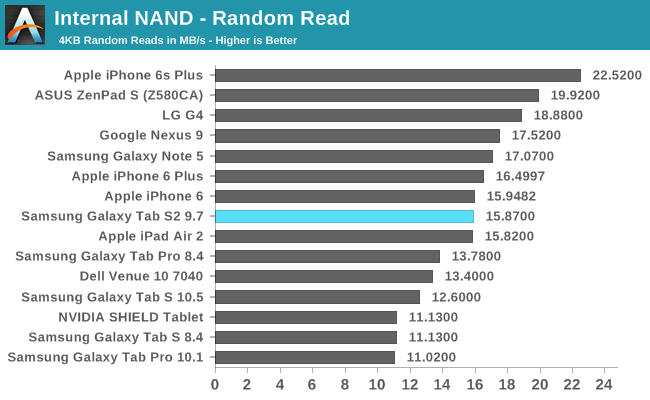
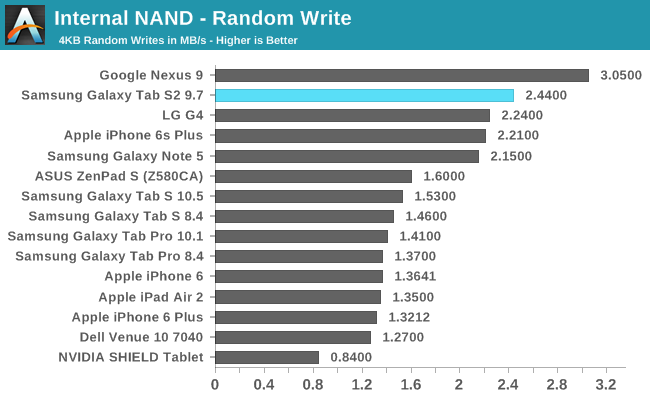
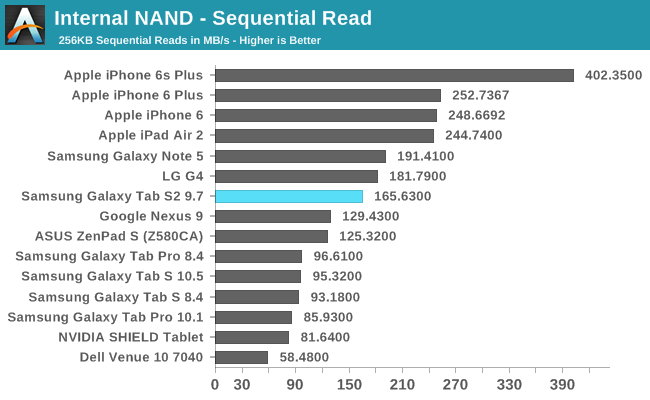
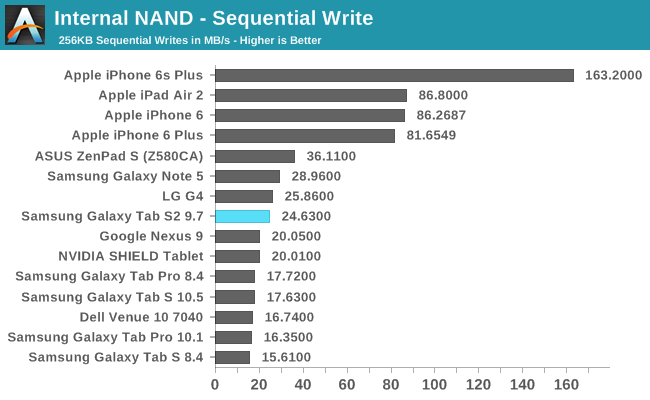
Both sets of read and write results are right around what you'd expect. Random writes in particular are very fast, and all the other results are fairly similar to those of the Galaxy Note 5. I don't expect internal NAND speeds will be a bottleneck on the Galaxy Tab S2, which is expected and fitting of a flagship tablet.










162 Comments
View All Comments
name99 - Thursday, October 15, 2015 - link
"You can't really notice a difference between its 5.6mm thickness and the 6.1mm thickness of the iPad Air 2, but the difference made by the lower mass is enormous."Really? The iPad Air 2 weighs 437 grams. The Tab S2 at 389g is about 10% less. I'm not doubting you, but that does not seem a small enough difference to justify the superlatives you are using.
I guess we'll see how much of this is psychological when the Air 3 lands next Spring; I imagine it will be around 400g.
Tech_guy - Thursday, October 15, 2015 - link
Ouch. This review just shows Apple's dominance, especially in graphics and web scores. Samsung and Android have their work cut out for them. It's amazing how powerful A9 is in graphics. I mean dang.beggerking@yahoo.com - Friday, October 16, 2015 - link
they picked and chose benchmarks. notice it showed none of the mutil-cpu benchs?Anandtech is way biased now
Tech_guy - Saturday, October 17, 2015 - link
The only multi-core benchmark is geekbench multi-core. Everything else just runs faster on iPhone 6sTech_guy - Thursday, October 15, 2015 - link
I can't imagine ever buying this thing over an iPad air 2. Samsung is not competitive in tablets anymore at all IMO. Plus iPad has always had MUCH better tablet apps. I think Android tablets will eventually die off, they need to.Pramod - Thursday, October 15, 2015 - link
It seems, in galaxy s6, nexus 6 and lg g flex 2, diamond pentile displays have four sub pixels instead of two. Gsmarena suggests this and they have optical microscope images with a scale bar. Can anandtech take a look and confirm this (or debunk it)?Pramod - Thursday, October 15, 2015 - link
And may be look at galaxy tab s2 display pixel arrangement too.Pramod - Thursday, October 15, 2015 - link
It seems that in newer amoled displays (nexus 6, galaxy s6, lg g flex 2, etc) the diamond pentile arrangement has 4 sub pixels instead of two. This was suggested by another review website. Can anandtech confirm this with microscope images with scalebar on galaxy tab s2?edzieba - Friday, October 16, 2015 - link
'Diamond' Pentile has a four-subpixel arrangement (RGBG), but LOGICALLY addresses only two subpixels per pixel. Or to put it another way, the green subpixels are at the logical resolution, but red and blue are at half that density.There is RGBW Pentile that adds in a White subpixel, but this is also logically addressed as two subpixels per pixel.
Pramod - Tuesday, October 27, 2015 - link
No, the blue sub pixels are at twice the density and the red and green are at the advertised ppi.